
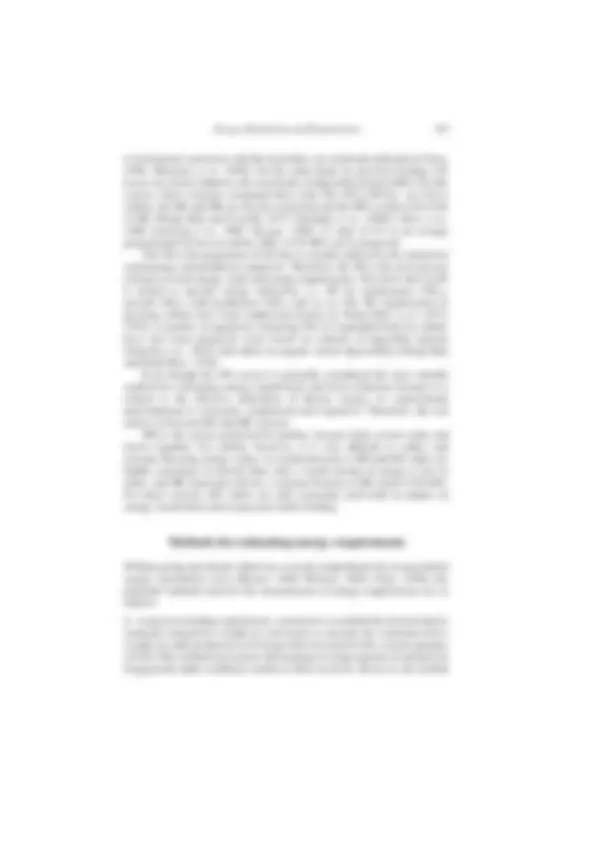

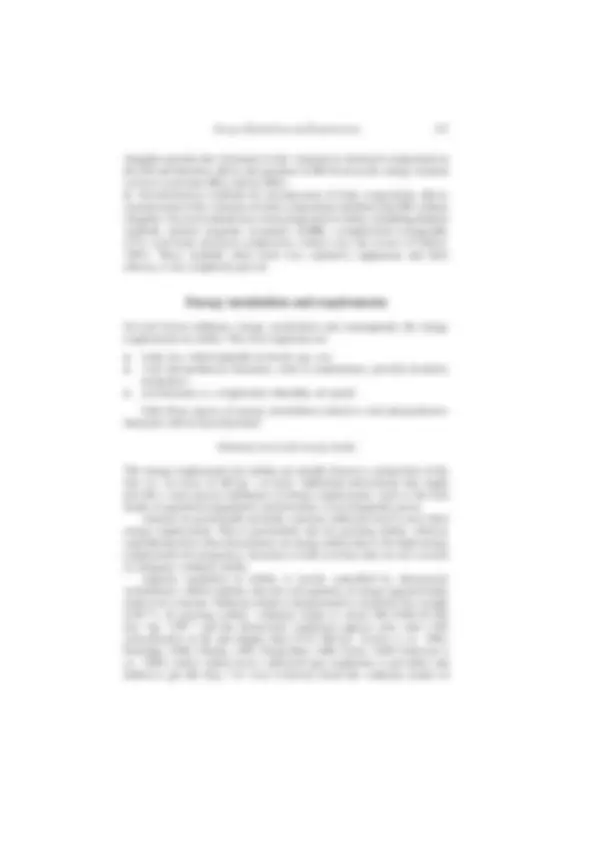
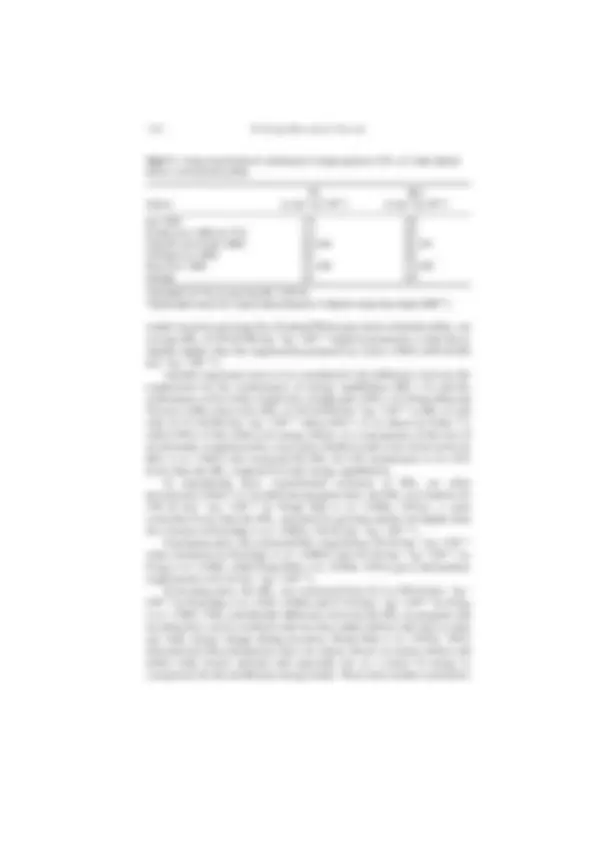
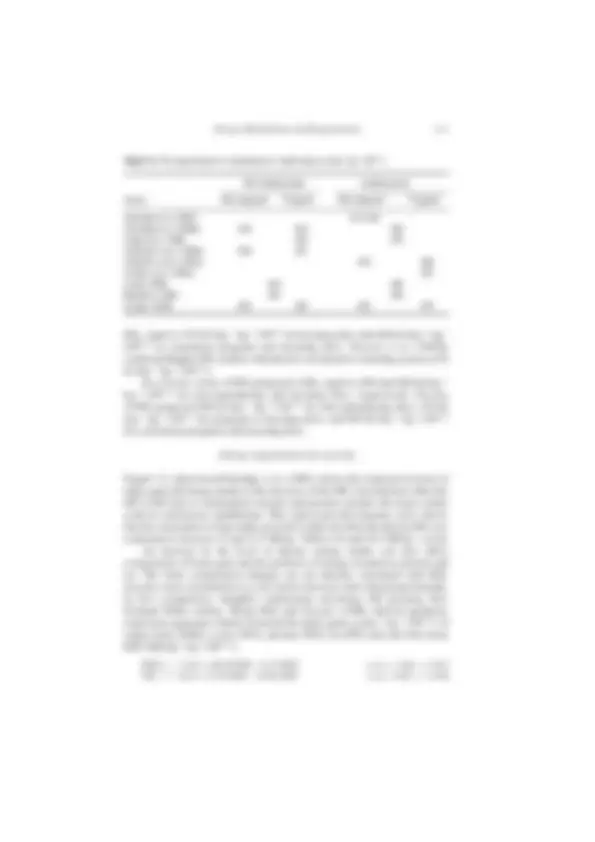
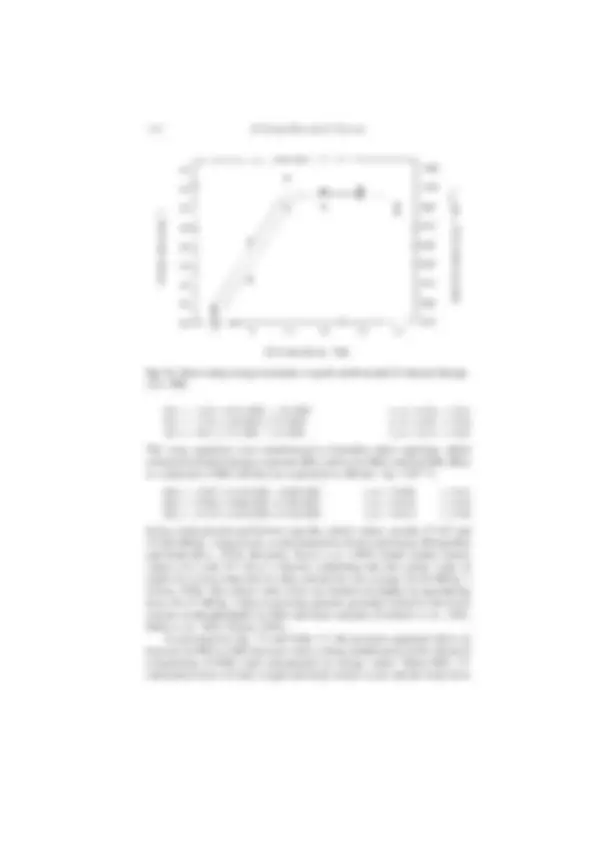
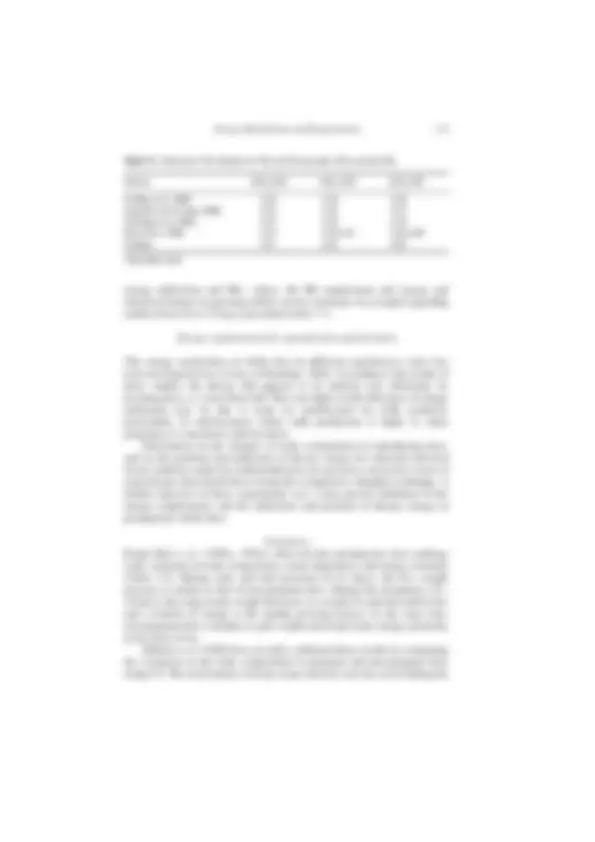
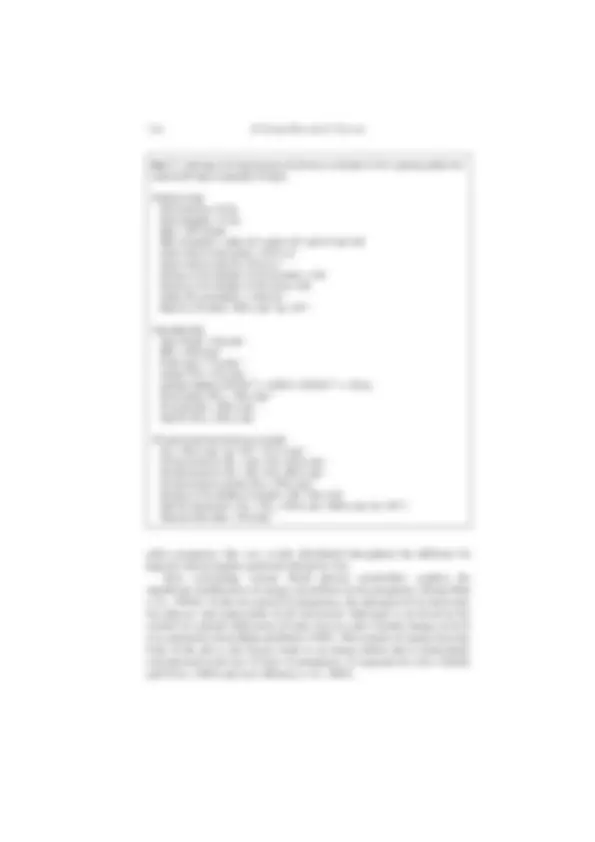
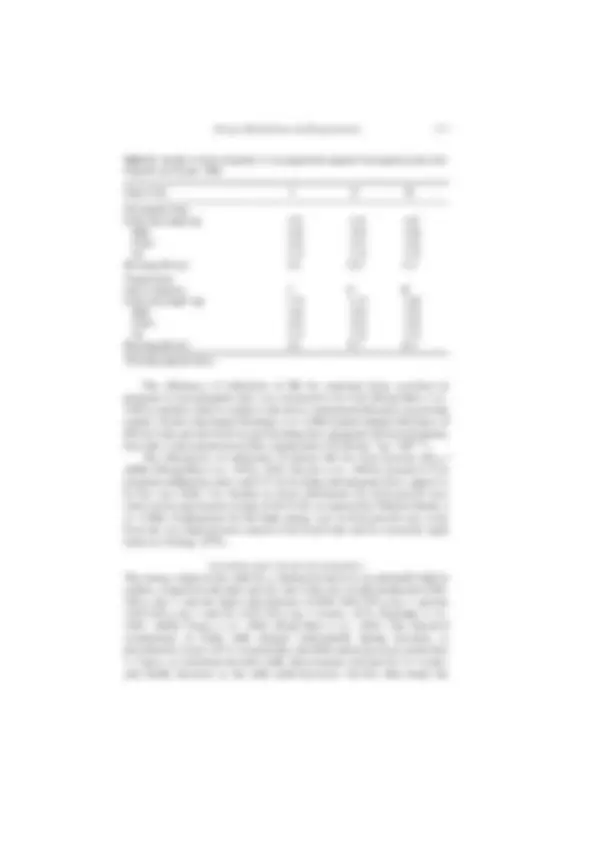
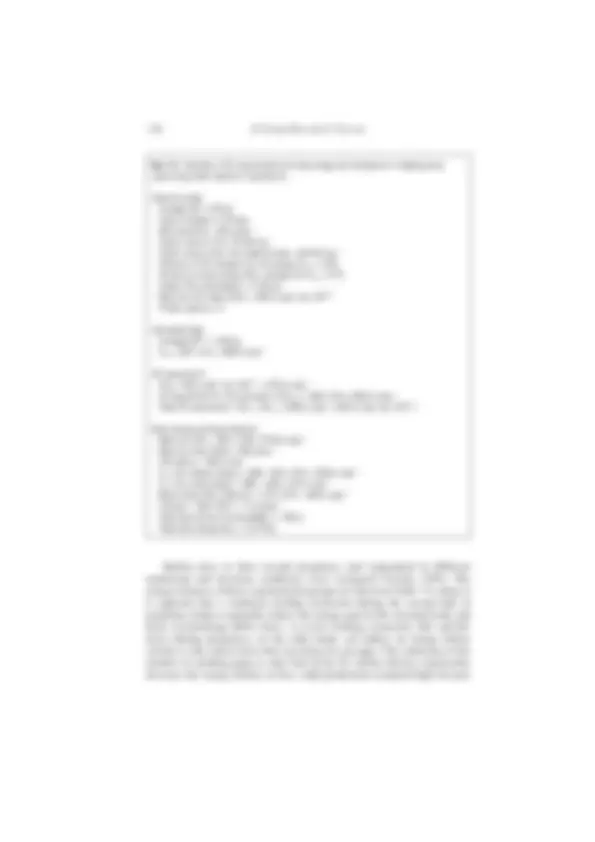
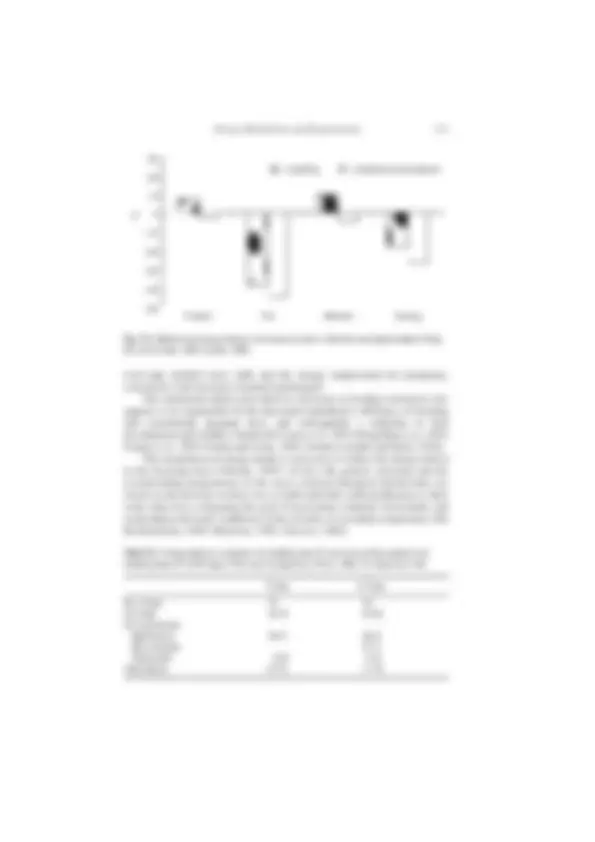
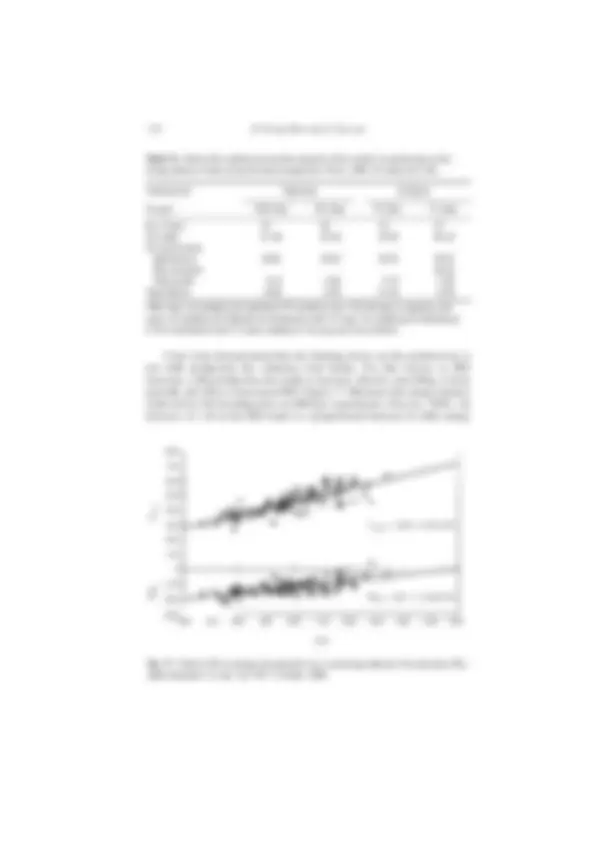
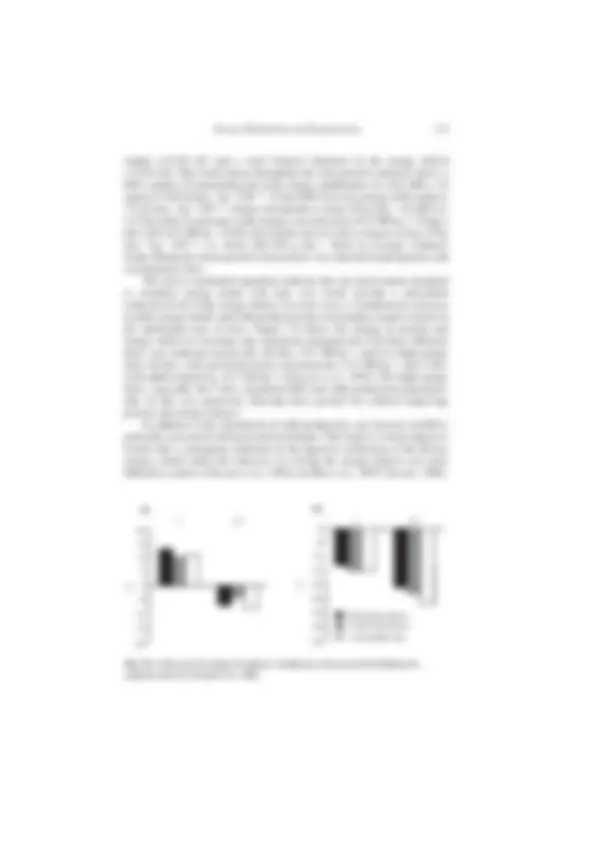
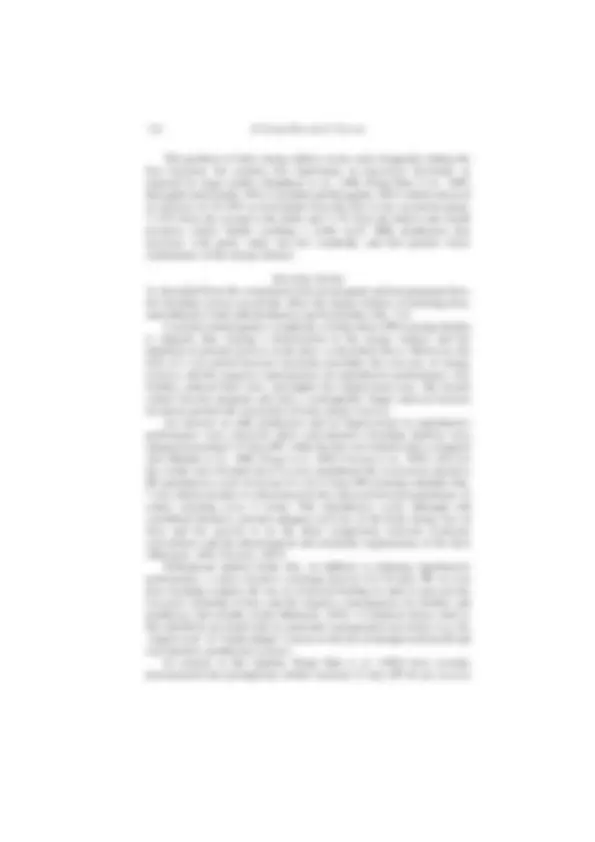
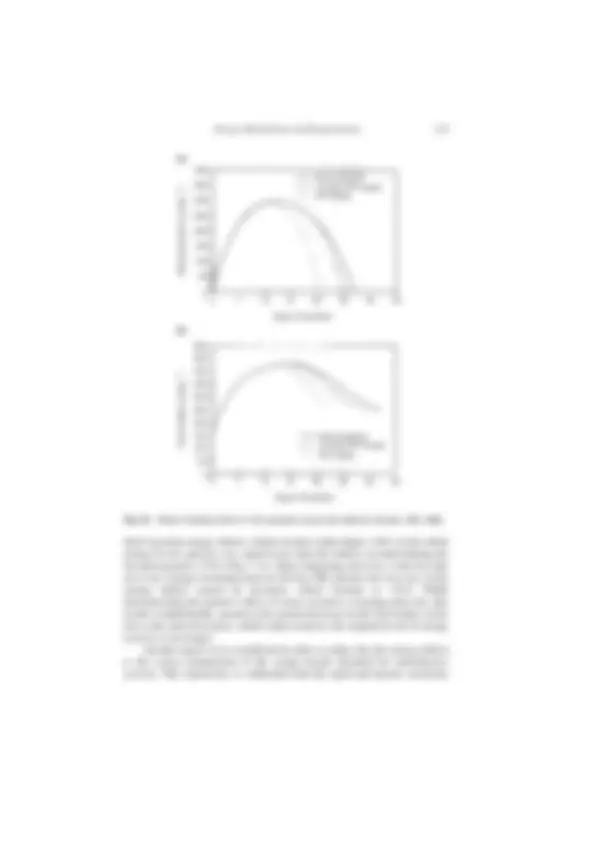
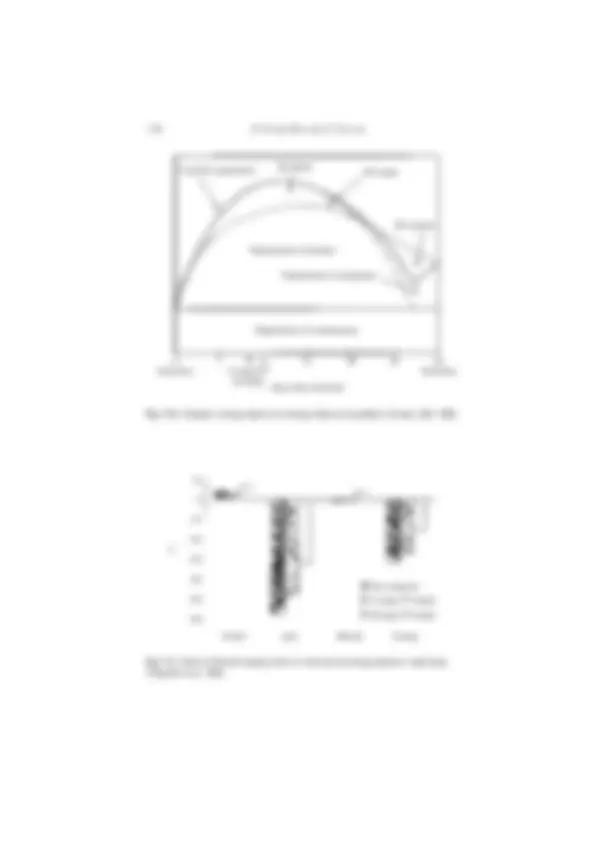
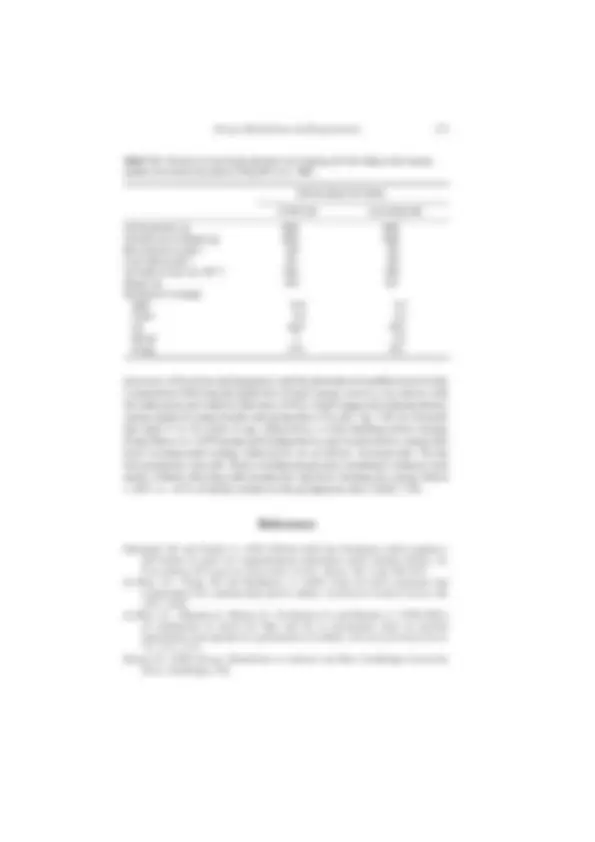
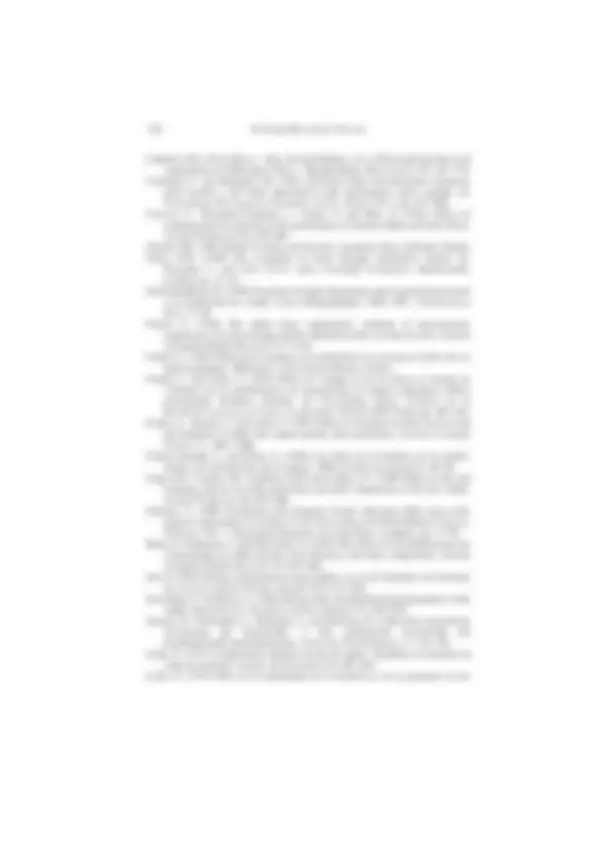
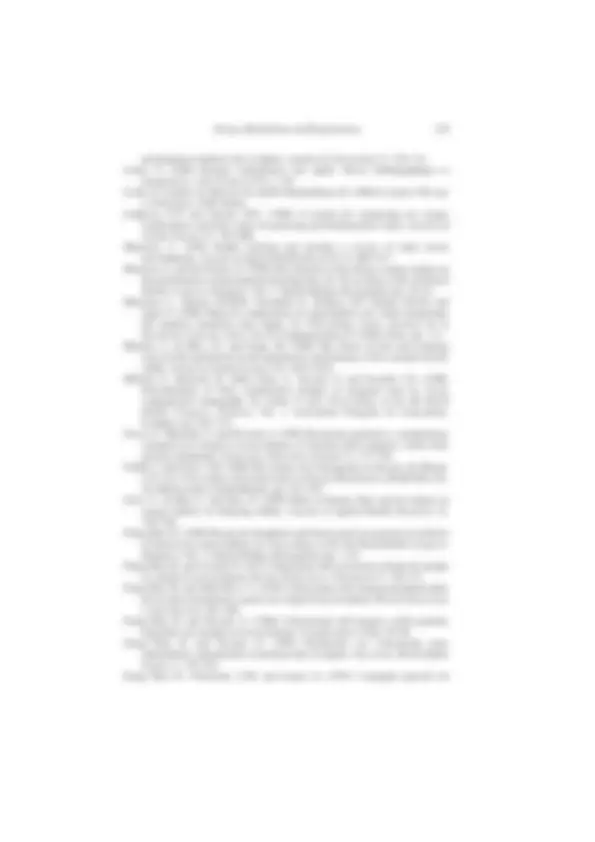
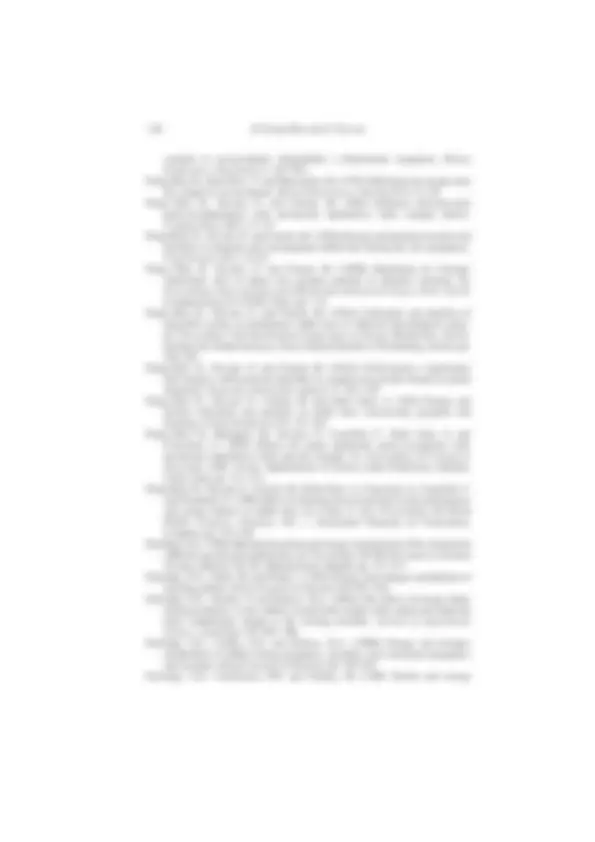
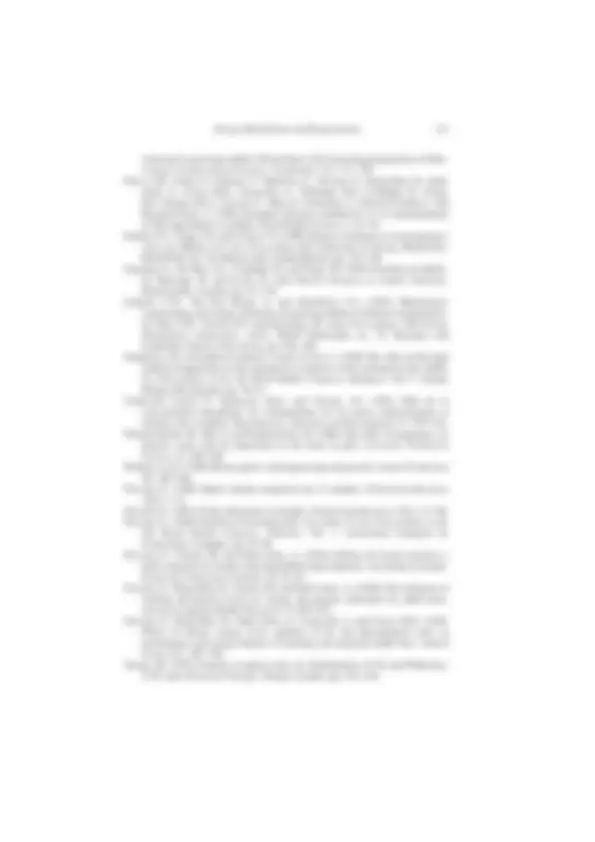



Estude fácil! Tem muito documento disponível na Docsity

Ganhe pontos ajudando outros esrudantes ou compre um plano Premium


Prepare-se para as provas
Estude fácil! Tem muito documento disponível na Docsity
Prepare-se para as provas com trabalhos de outros alunos como você, aqui na Docsity
Os melhores documentos à venda: Trabalhos de alunos formados
Prepare-se com as videoaulas e exercícios resolvidos criados a partir da grade da sua Universidade
Responda perguntas de provas passadas e avalie sua preparação.

Ganhe pontos para baixar
Ganhe pontos ajudando outros esrudantes ou compre um plano Premium
Comunidade
Peça ajuda à comunidade e tire suas dúvidas relacionadas ao estudo
Descubra as melhores universidades em seu país de acordo com os usuários da Docsity
Guias grátis
Baixe gratuitamente nossos guias de estudo, métodos para diminuir a ansiedade, dicas de TCC preparadas pelos professores da Docsity
Nutrição de Coelhos
Tipologia: Notas de estudo
1 / 30

Esta página não é visível na pré-visualização
Não perca as partes importantes!























103
© CAB INTERNATIONAL 1998.The Nutrition of the Rabbit (eds C. de Blas and J. Wiseman)
Dipartimento di Scienze Zootecniche, University of Padua, Agripolis, 35020 Legnaro (Padova), Italy
Energy is the potential ability to produce work and the joule (J) is the international unit used to measure all forms of energy. Since this unit is very small, the multiples kilojoules (1 kJ = 1000 J) and megajoules (1 MJ = 1000 kJ) are used much more widely in animal nutrition and feeding. Joules can easily be converted into other energy units (e.g. calories) by using appropriate conversion factors. The standard calorie (cal) is equivalent to the energy cost of increasing the temperature of 1 gram of distilled water by 1 °C (or more precisely, from 14.5 to 15.5°C). In practice, kilocalories (1 kcal = 1000 cal) and megacalories (1 Mcal = 1000 kcal) are still very commonly used and converted into kJ and MJ by multiplying by 4.184. In the nutrition and feeding of rabbits, as in other species, the following energy parameters are used to express energy requirements and nutritive value of feeds: gross energy (GE), digestible energy (DE), metabolizable energy (ME), and net energy (NE) (Fig. 7.1). GE, or heat of combustion, is the quantity of chemical energy lost as heat when organic matter is completely oxidized, forming water and carbon dioxide. In food, the GE content depends on the organic matter chemical composition: the energy values of the single components are about 22–24 MJ kg –1^ for crude protein, 38–39 MJ kg –1^ for fats (ether extract), and 16–17 MJ kg –1^ for carbohydrates (fibre and starch). Therefore, the GE value depends essentially on the dietary fat concentration, because fat has more than twice the GE content of other constituents. However, the GE concentration in complete diets or raw materials does not provide any useful information on the availability and utilization of dietary energy by the animal and for this reason is not a relevant unit in the energy evaluation of feeds or animal energy requirements. DE can be measured in vivo , by subtracting from GE the quantity of energy recovered in the faeces (FE), in other words, the energy of undigested nutrients:
104 R. Parigi Bini and G. Xiccato
DE = GE – FE.
In compound feeds for rabbits, DE represents a portion that usually varies from 0.50 to 0.80 of the GE. The DE is a good estimation of the energy value of feeds, because the latter depends on nutrient digestibility and can be measured quite easily. The energy system in rabbits is currently based on DE, and a standardized method (Perez et al ., 1995) capable of offering repeatable and reproducible measurements for the in vivo determination of dry matter (DM) digestibility (and consequently energy digestibility) has been recently proposed and adopted by the scientific community. ME is calculated from DE by subtracting the energy loss associated with urine (UE) and intestinal fermentation gases (GasE), primarily methane:
ME = DE – (UE + GasE). In ruminants, GasE accounts for a significant proportion of DE, whereas in rabbits it is practically negligible, as are the heat losses from caecal fermentation (Gidenne, 1996). On the other hand, the energy loss associated with urine is substantial and depends on feed protein concentration (Maertens, 1992). Nitrogen losses increase (and consequently the energy associated with urea and other nitrogen catabolites) as dietary protein increases. The UE can be calculated from the quantity of N excreted daily in the urine (UN) (Parigi Bini and Cesselli, 1977):
UE (kJ day –1^ ) = 51.76 UN (g day –1^ ) – 3.01 r.s.d. = 3.93; r = 0.90. ME is undoubtedly more precise for estimation of energy requirement and feed energy evaluation because it is not affected by the energy losses due
Gross energy (GE)
0.60 – 0.65 GE Digestible energy (DE)
0.57 – 0.62 GE Metabolizable energy (ME)
0.35 – 0.40 GE Net energy (NE)
Faecal energy
Urine energy
Heat losses
Fig. 7.1. Energy utilization of feeds in rabbits (from Xiccato, 1989).
106 R. Parigi Bini and G. Xiccato
does not provide any useful information on body composition changes which are very often found in rabbits during growth, lactation or pregnancy;
2. Calorimetric methods, which measure the heat lost by the animals. Measurement is direct (direct calorimetry) when calorimeters are used, and indirect (indirect calorimetry) when based on the gaseous exchanges determined in respiration chambers of various types (open or closed circuit). These methods allow the direct measurement of ME intake (MEI) and energy lost as heat (HE). The retained energy (RE) in either the body or the products (milk, fetal body, wool) is calculated by difference (RE = MEI – HE). Calorimetric methods require very complex and expensive equipment and can be utilized only on a few animals and in short-term experiments. Moreover, although the measurements obtained are highly accurate and repeatable on the same animal in time, they are hardly comparable to those obtained under practical rearing conditions. In addition, as in feeding experiments, calorimetric methods do not permit the identification of the origin of heat lost from different physiological functions (e.g. whether from feed digestion or body tissue utilization) or the partition of RE (e.g. energy retained in maternal or fetal body); 3. Comparative slaughter technique, which measures the variation of the energy contained in the body. Unlike calorimetric methods, this technique allows the direct measurement of MEI and RE, while HE is calculated by difference (HE = MEI – RE). This method constitutes the basis of the California net energy system developed for beef cattle (Lofgreen and Garrett,
Energy Metabolism and Requirements 107
slaughter permits the estimation of the variation in chemical composition in the EB and therefore allows the partition of RE between the energy retained (or lost) as protein (RE (^) p ) and fat (RE (^) f );
4. Non-destructive methods for measurement of body composition, allows measurement of the variation of body composition and then body RE without slaughter. Several methods have been proposed for rabbits, including dilution methods, nuclear magnetic resonance (NMR), computerized tomography (CT), total body electrical conductivity (Tobec) (see the review of Fekete, 1992). These methods often need very expensive equipment and their efficacy is not completely proven.
Several factors influence energy metabolism and consequently the energy requirements in rabbits. The most important are:
Only those aspects of energy metabolism related to vital and productive functions will be described here.
Voluntary feed and energy intake
The energy requirements for rabbits are usually listed as a proportion of the diet (i.e. in terms of MJ kg –1^ of feed). Additional information that might provide a more precise definition of energy requirements, such as the feed intake or quantitative/qualitative performance, is not frequently given. Animals in good health normally consume sufficient feed to meet their energy requirements. This is particularly true for growing rabbits, whereas reproducing does often demonstrate an energy deficit due to the high energy requirements for pregnancy, lactation or both activities that are not covered by adequate voluntary intake. Appetite regulation in rabbits is mostly controlled by chemostatic mechanisms, which explains why the total quantity of energy ingested daily tends to be constant. Voluntary intake is proportional to metabolic live weight (LW 0.75^ ). In growing rabbits, voluntary intake is about 900–1000 kJ DE day –1^ kg –1^ LW 0.75^ and the chemostatic regulation appears only with a DE concentration of the diet higher than 9–9.5 MJ kg–1^ (Lebas et al ., 1984; Partridge, 1986; Cheeke, 1987; Parigi Bini, 1988; Lebas, 1989; Santomá et al ., 1989), below which level a physical-type regulation is prevalent and linked to gut fill (Fig. 7.2). Less is known about the voluntary intake of
Energy Metabolism and Requirements 109
sion of RE on MEI (∆RE/∆MEI) is defined as the efficiency of utilization of ME and commonly indicated by the letter k. When MEI is below the maintenance level (MEI < ME (^) m ), RE becomes negative or, in other words, the body loses energy, with a specific slope on MEI ( k for maintenance, k m). When MEI is above the maintenance level (MEI > MEm ), RE is positive, or rather the body gains energy with a specific efficiency ( k for growth, k g). The efficiency of energy utilization for growth is lower than that for maintenance ( k g < k m). When the energy system is based on DE, RE can be related to DE intake (DEI) instead of MEI. In different studies on rabbit energy metabolism, the efficiencies of utilization of DEI for maintenance, growth, lactation or pregnancy (∆RE/∆DEI) have been estimated instead of the k coefficients relating to MEI (de Blas et al ., 1985; Parigi Bini and Xiccato, 1986; Partridge et al ., 1989; Xiccato et al ., 1995). Assuming a constant ratio ME = 0.95 DE, the efficiency of DEI utilization can be easily transformed into k values by dividing by 0.95. For example, using data from de Blas et al. (1985):
k g = ∆RE (^) g /∆DEI / 0.95 = 0.53/0.95 = 0.56.
Energy requirements for maintenance
In rabbits, as in all animals, energy losses for maintenance (basal metabolism and voluntary activity) are related to metabolic weight and physiological state. As reviewed by Parigi Bini (1988) and Lebas (1989), different estimates of DE requirements for the maintenance (DEm ) of growing rabbits have been found, varying from 381 kJ day –1^ kg –1^ LW 0.75^ in New Zealand White rabbits (Partridge et al ., 1989) to 552 kJ DE day–1^ kg –1^ LW 0.75^ in Giant Spanish growing rabbits (de Blas et al ., 1985). Such a wide range can be attributed to both the breeds, characterized by highly contrasting daily gain and body composition, and to the methodology used (calorimetric methods usually give lower DE (^) m than comparative slaughter). Table 7.1 shows a review of
RE >0g
RE (^) g= 0
RE < 0g
0 ME (^) m MEI
k (^) m
k (^) g
Fig. 7.3. Variation of RE (^) g as a function of ME intake (MEI).
110 R. Parigi Bini and G. Xiccato
studies based on growing New Zealand White pure-bred or hybrid rabbits. An average DE (^) m of 430 kJ DE day –1^ kg –1^ LW 0.75^ might be proposed, a value that is slightly higher than the requirement proposed by Lebas (1989) (400 kJ DE day –1^ kg –1^ LW 0.75^ ). Another important factor to be considered is the difference between the requirement for the maintenance of energy equilibrium (RE = 0) and the maintenance of live body weight (live weight gain, LWG = 0). Parigi Bini and Xiccato (1986) observed a DE (^) m of 425 kJ DE day –1^ kg –1^ LW 0.75^ at RE = 0 and only of 273 kJ DE day –1^ kg –1^ LW 0.75^ when LWG = 0. As shown in Table 7.3, when LWG = 0 the rabbit is in energy deficit, as a consequence of the loss of fat primarily compensated by water gain. Similar results were observed by de Blas et al. (1985) who estimated the DE (^) m for LW maintenance to be 10% lower than the DE (^) m required for body energy equilibrium. In reproducing does, experimental estimates of DE (^) m are often inconsistent (Table 7.2). In adult non-pregnant does, the DE (^) m was found to be 398 kJ day –1^ kg –1^ LW 0.75^ by Parigi Bini et al. (1990a, 1991a), a value somewhat lower than the DE (^) m measured in growing rabbits but higher than the estimate of Partridge et al. (1986b; 326 kJ day –1^ kg –1^ LW 0.75^ ). In pregnant does, the estimated DE (^) m ranged from 352 kJ day –1^ kg –1^ LW 0. when measured by Partridge et al. (1986b) and 452 kJ day –1^ kg–1^ LW 0.75^ by Fraga et al. (1989), while Parigi Bini et al. (1990a, 1991a) gave intermediate requirements (431 kJ day –1^ kg –1^ LW 0.75^ ). In lactating does, the DEm was estimated from 413 to 500 kJ day –1^ kg – LW 0.75^ by Partridge et al. (1983, 1986b) and 473 kJ day –1^ kg –1^ LW 0.75^ by Fraga et al. (1989). This considerable difference between the DEm in pregnant and lactating does can be ascribed to the fact that studies did not take into account any body energy change during lactation. Parigi Bini et al. (1991b, 1992) demonstrated that primiparous does are almost always in energy deficit and utilize body tissues (protein and especially fat) as a source of energy to compensate for the insufficient energy intake. These latter studies estimated a
Table 7.1. Energy requirements for maintenance of energy equilibrium (RE = 0) in New Zealand White or hybrid growing rabbits.
DE (^) m ME (^) ma Authors (kJ day –1^ kg –1^ LW 0.75^ ) (kJ day –1^ kg –1^ LW 0.75^ )
Isar (1981) 470 446 Scheeleet al. (1985) (at 17°C) 413 392 Parigi Bini and Xiccato (1986) b^ 425–454 404– Partridgeet al. (1989) 381 362 Nizzaet al. (1995) 441–454 419– Average 431 409 a (^) Calculated from DE (^) m by assuming ME = 0.95 DE. b (^) Recalculated values from original data expressed on metabolic empty body weight (EBW 0.75 (^) ).
112 R. Parigi Bini and G. Xiccato
PG = – 2.42 + 10.01 DEI – 1.70 DEI 2 r.s.d. = 0.38, r = 0. FG = – 2.76 + 1.69 DEI + 5.75 DEI 2 r.s.d. = 0.45, r = 0. AG = – 0.91 + 3.21 DEI – 1.51 DEI 2 r.s.d. = 0.12, r = 0.
The same equations were transformed to formulate other equations which estimated retained energy as protein (RE (^) p ) and as fat (RE (^) f ) and total RE (RE (^) g ) as a function of DEI (all data are expressed as MJ day –1^ kg –1^ LW 0.75^ ):
RE (^) p = – 0.057 + 0.234 DEI – 0.040 DEI 2 r.s.d. = 0.009, r = 0. RE (^) f = – 0.098 + 0.060 DEI + 0.204 DEI 2 r.s.d. = 0.016, r = 0. RE (^) g = – 0.155 + 0.294 DEI + 0.164 DEI 2 r.s.d. = 0.012, r = 0.
In fact, body protein and fat have specific caloric values, namely 23.347 and 35.564 MJ kg –1^ respectively, as determined by bomb calorimetry (Parigi Bini and Dalle Rive, 1978). Recently, Nizza et al. (1995) found similar caloric values (23.1 and 35.7 kJ g –1), thereby confirming that the caloric value of rabbit fat is lower than that of other animal fats (on average 38–40 MJ kg–1^ ) (Close, 1990). The caloric value of fat was found to be higher in reproducing does (36–37 MJ kg –1^ ) than in growing animals, probably related to the lower content of phospholipids in older and fatter animals (Cambero et al ., 1991; Hulot et al ., 1992; Fortun, 1994). As presented in Fig. 7.5 and Table 7.3, the previous equations show an increase in EBG as DEI increases and a strong modification of the chemical composition of EBG (and consequently its energy value). When DEI = 0, substantial losses of body weight and body tissues occur and the body loses
Fig. 7.4. Effect of dietary energy concentration on growth rate r and total DE intake m (Partridge et al., 1989).
44
42
40
38
36
34
32
30
28
Growth rate (g day
) −^1
7 9 11 12 13 14
DE of diet (MJ kg −^1 DM)
1030
1010
990
970
950
930
910
890
870
Daily DE intake (kJ kg
LW
.
−^1
0 75
)
Energy Metabolism and Requirements 113
155 kJ day–1^ kg –1^ LW 0.75^. This loss is called ‘fasting metabolism’, which means the loss of body energy at fasting. As mentioned above, when DEI is equal to 273 kJ day–1^ kg –1^ LW 0.75^ , the EB weight is maintained (EBG = 0) but losses of fat (–1.9 g day –1^ kg –1^ LW 0.75^ ) and energy (–62 kJ day –1^ kg –1^ LW 0.75) are observed. As discussed above, when DEI = DE (^) m , the energy equilibrium is reached as a consequence of a gain of energy (36 kJ day–1^ kg–1^ LW0.75) as protein (+1.5 g day –1^ kg –1^ LW 0.75^ ) and an equivalent loss of energy as fat (–1.0 g day –1^ kg –
Fig. 7.5. Influence of DE intake on EB gain composition (a) and partition of energy retained as protein and fat (b) (from Parigi Bini and Xiccato, 1986).
20
16
12
8
4
0
4
8
−
−
Gain (g day
kg
LW
)
−^
− 1
1
0.0 0.2 0.4 0.6 0.8 1.0 1.
0.2 0.4 0.6 0.8 1.0 1.
DE intake (MJ day −^1 kg −^1 LW 0.75)
WG
FG PG
AG
(a)
−
Retained energy (MJ day−
kg
LW
)
−^
− 1
1
(b)
DE intake (MJ day −^1 kg −^1 LW 0.75)
ERp
ERf
ERg
Energy Metabolism and Requirements 115
energy utilization and DE (^) m values, the DE requirement and energy and chemical balance in growing rabbits can be estimated. An example regarding rabbits from 0.8 to 2.4 kg is provided in Box 7.1.
Energy requirements for reproduction and lactation
The energy metabolism of rabbit does in different reproductive states has been investigated (see review of Partridge, 1986). According to the results of these studies, the dietary DE appears to be utilized very efficiently by lactating does, i.e. more than 0.80. This very high overall efficiency of energy utilization may be due to body fat mobilization for milk synthesis, particularly in mid-lactation (when milk production is high) or when pregnancy is concurrent with lactation. Information on the changes of body composition in reproducing does, and on the partition and utilization of dietary energy for maternal and fetal tissue synthesis and/or for milk production was given in a successive series of experiments (described below) using the comparative slaughter technique. A further objective of these experiments was a more precise definition of the energy requirements and the utilization and partition of dietary energy in primiparous rabbit does.
Pregnancy Parigi Bini et al. (1990a, 1991a) observed that primiparous does undergo wide variations in body composition, tissue deposition, and energy retention (Table 7.5). During early and mid gestation (0–21 days), the live weight increase is similar to that of non-pregnant does. During late pregnancy (21– 30 days), the empty body weight decreases as a result of a protein and fat loss and a transfer of energy to the rapidly growing fetuses. At the same time, non-pregnant does continue to gain weight and retain body energy, primarily in the form of fat. Milisits et al. (1996) have recently confirmed these results by comparing the variations in the body composition of pregnant and non-pregnant does using CT. The total balance of body tissue showed a net loss in fat during the
Table 7.4. Efficiency of DE utilization for RE (^) g and RE as protein (RE (^) p ) and fat (RE (^) f ).
Authors ∆RE (^) g /∆DEI ∆RE (^) p /∆DEI ∆RE (^) f /∆DEI
De Blaset al. (1985) 0.52 0.38 0. Parigi Bini and Xiccato (1986) 0.53 0.44 0. Partridgeet al. (1989) 0.47 0.39 0. Nizzaet al. (1995) a^ 0.51 a^ 0.39–0.41 0.64–0. Average 0.51 0.40 0. a (^) Calculated value.
116 R. Parigi Bini and G. Xiccato
entire pregnancy that was evenly distributed throughout the different fat deposits (intrascapular, perirenal and pelvic fat). Data concerning various blood plasma metabolites confirm the significant modification of energy metabolism in late pregnancy (Parigi Bini et al ., 1990a). In the last period of pregnancy, the glucagon level increased, but glucose and triglyceride levels decreased. Glucagon is involved in the control of catabolic utilization of body reserves and a similar change in level was reported by Jean-Blain and Durix (1985). The transfer of energy from the body of the doe to the fetuses leads to an energy deficit that is particularly concentrated in the last 10 days of pregnancy, as reported for sows (Noblet and Close, 1980) and ewes (Rattray et al ., 1980).
Box 7.1. Estimate of DE requirements and efficiency of utilization of DE in growing rabbits from weaning (35 days) to slaughter (75 days).
Reference data LW at weaning = 0.8 kg LW at slaughter = 2.4 kg EBG = 0.87 LW gain EBG composition = water 0.61; protein 0.21; fat 0.15; ash 0. Caloric value of body protein = 23.2 kJ g – Caloric value of body fat = 35.6 kJ g – Efficiency of DE utilization for RE as protein = 0. Efficiency of DE utilization for RE as fat = 0. Dietary DE concentration = 10 MJ kg – Maximum DE intake = 950 kJ day –1^ kg –1^ LW 0.
Calculated data Daily LW gain = 40 g day – EBG = 34.8 g day – Protein gain = 7.3 g day – Fat gain (FG) = 5.2 g day – Average metabolic LW (LW 0.75^ ) = ((0.800 + 2.400)/2) 0.75^ = 1.42 kg RE as protein (RE (^) p ) = 169 kJ day – RE as fat (RE (^) f ) = 185 kJ day – Total RE (RE (^) g ) = 354 kJ day –
DE requirement and efficiency for growth DE (^) m = 430 kJ day –1^ kg –1^ LW 0.75^ = 611 kJ day – DE requirement for RE (^) p = 169 / 0.40 = 423 kJ day – DE requirement for RE (^) f = 185 / 0.65 = 285 kJ day – DE requirement for growth (DE (^) g ) = 708 kJ day – Efficiency of DE utilization for growth = 354 / 708 = 0. Total DE requirement = DE (^) m + DEg = 1319 kJ day –1^ (929 kJ day –1^ kg –1^ LW 0.75^ ) Required feed intake = 132 g day –
118 R. Parigi Bini and G. Xiccato
composition of milk DM tends to remain unchanged, except for a constant reduction in lactose, and therefore the caloric value of milk is strictly dependent on the variation of DM content (Parigi Bini et al ., 1991b; Xiccato et al ., 1995). Different measurements of milk energy concentration and variation during lactation are listed in Table 7.7. The average caloric value of 8.4 MJ kg–1^ is very close to the value of 8.53 MJ kg –1^ reported by Blaxter (1989) and is about 2.8 times higher than that of cow milk (2.97 kJ g –1^ ). At the same time, if the daily excretion of energy as milk is expressed in terms of metabolic weight, the average milk energy output is higher in rabbits than in cows. For example, a 4 kg doe producing 250 g day – (^1) of milk excretes 752 kJ E (^) milk day –1 (^) kg –1 (^) LW 0.75 (^) , while a 600 kg cow producing
25 kg day –1^ of milk excretes only 612 kJ E (^) milk day –1^ kg –1^ LW 0.^. With respect to the utilization of DE for milk production (Table 7.6), the estimate of 0.63 in both lactating non-pregnant and lactating and concurrent pregnant does (Parigi Bini et al ., 1991a,b, 1992) agrees with the estimate made by Lebas (1989), but is much lower than the results of Partridge et al. (1983, 1986b), who reported an efficiency of ME utilization for milk production varying from 0.74 to 0.94. Nevertheless, these coefficients were ascribed to the particular diets used (high fat, high protein) and a value of
Table 7.7. Energy concentration (MJ kg –1^ ) and variation of rabbit milk during lactation.
Authors 1st week 2nd and more weeks Final week Average
Lebas (1971) a^ 8.10 7.11 10.22 8. Partridgeet al. (1983) 8.42 9.01 10.25 9. Partridgeet al. (1986a) a^ 7.13–7.79 7. Partridgeet al. (1986b) 8.39 10.0–14. Fragaet al. (1989) 7.98 7. Parigi Biniet al. (1991b) 7.75 9.84 8. Maertens (1992) 8.0 9.0–12. Xiccatoet al. (1995) 8.06–8.76 8. Average 8.3 8.0 10.8 8.
a (^) Estimated energy values from chemical composition (Partridgeet al., 1986a).
Table 7.6. Efficiency of utilisation of DE and body energy of does (RE (^) d ) for fetal growth (E (^) fetus ) and energy milk production (E (^) milk ).
Authors ∆E (^) fetus /∆DEI ∆E (^) milk /∆DEI ∆E (^) milk /∆RE (^) d
Partridgeet al. (1983, 1986b) 0.68–0.84 0. Partridgeet al. (1986a) 0. Fragaet al. (1989) 0. Parigi Biniet al. (1991a,b, 1992) 0.27–0.31 0.63 0.76–0. Xiccatoet al. (1992b, 1995) 0.30 0.63 0.
Energy Metabolism and Requirements 119
metabolizable energy efficiency of 0.65 for normal diets was proposed (Partridge, 1986; Partridge et al ., 1986a). This value corresponds to about 0.61–0.62 in terms of DE efficiency. Finally, the efficiency of utilization of energy retained in the body (RE (^) d ) for milk production was 0.81 in lactating does (Parigi Bini et al ., 1991a,b) and 0.76 in lactating and pregnant does (Parigi Bini et al ., 1992; Xiccato et al ., 1992b); the values found for utilization of both the dietary energy and the maternal energy for lactation agree with the results of experiments conducted on other animal species (cattle and pigs) and the theoretical calculations reported by Blaxter (1989). Similarly to the estimate for growing rabbits, a calculation of the energy requirement and body balance can be made for reproducing does. Box 7. provides an example regarding lactating non-pregnant does.
Energy and chemical balance during reproduction The considerable energy excretion through milk in lactating does, which is even more pronounced in selected ‘hybrid’ does, is not completely compensated for by voluntary DE intake, and this causes a consistent deficit in both body tissues and energy. During the first lactation, the body of the doe is subjected to a marked reduction in energy reserves following the mobilization of fat deposits, while the body protein level remains unchanged (Parigi Bini et al ., 1990b, 1991b, 1992; Xiccato et al ., 1992b, 1995) (Fig. 7.6). Unlike other species, this energy loss remains constant throughout lactation (Parigi Bini et al ., 1990b) and no recovery is observed during the final phase due to milk production, which remains high even after 25–30 days of lactation (Fortun, 1994). In post partum (PP) mated does (therefore concurrently pregnant and lactating), a rapid reduction in milk production is observed after 20 days of lactation (Lebas, 1972; Lebas et al ., 1984; Maertens and De Groote, 1988; Parigi Bini et al ., 1992; Xiccato et al ., 1995) (see Fig. 7.9). Nevertheless, energy requirements remain high due to the rapid development of the fetuses and uterine tissues. The simultaneous condition of pregnancy accentuates these chemical modifications and is responsible for a further reduction in fat content and body energy levels. The overlapping of pregnancy and lactation prevents the return to normal body conditions (Fortun et al ., 1993) and increases the protein requirements in response to the elevated demand for protein by the fetuses and the rapid turnover in fetal protein (Parigi Bini et al ., 1992; Xiccato et al ., 1992b, 1995). Fortun (1994) compared the energy balance in pregnant non-lactating does (P) and in pregnant and lactating does (LP) in their second pregnancy (Table 7.8). In this study, a positive energy balance in P does (+12.51 MJ at 28 days of pregnancy) was estimated, whereas LP does were found to be in negative balance (–11.78 MJ). Moreover, in LP does the energy deficit appears higher during the second half of pregnancy.
Energy Metabolism and Requirements 121
each pup suckled more milk and the energy requirement for pregnancy concurrent with lactation remained unchanged. The nutritional deficit provoked by lactation or feeding restriction also appears to be responsible for the decreased reproductive efficiency of lactating and concurrently pregnant does, and consequently a reduction in fetal development and viability (Viudes-De Castro et al ., 1991; Parigi Bini et al ., 1992; Fortun et al ., 1993; Fortun and Lebas, 1994; Fortun-Lamothe and Bolet, 1995). The stimulation of energy intake is necessary to reduce the energy deficit in the lactating does (Cheeke, 1987). In fact, the genetic selection and the crossbreeding programmes of the most common European hybrid lines are based on the increase in litter size at birth and daily milk production as their main objectives, relegating the goal of increasing voluntary feed intake and maintaining the body conditions of the females to secondary importance (De Rochambeau, 1990; Maertens, 1992; Xiccato, 1996).
30
20 10 0
10
20
30
40
50
−
−
−
−
−
%
Protein Fat Mineral Energy
Lactating Lactating and pregnant
Table 7.8. Energy balance in pregnant non-lactating does (P) and concurrently pregnant and lactating does (LP) at 28 days of their second pregnancy (Fortun, 1994). All values are in MJ.
P does LP does
No. of does 72 79 DE intake 54.72 87. DE requirements Maintenance 33.21 35. Milk production 57. Fetal growth 9.00 6. Total balance +12.51 –11.
Fig. 7.6. Material and energy balance of primiparous does in different physiological states (Parigi Bini and Xiccato, 1993; Xiccato, 1996).
122 R. Parigi Bini and G. Xiccato
It has been demonstrated that the limiting factor on doe productivity is not milk production but voluntary feed intake. For this reason, as DEI increases, milk production also tends to increase, thereby cancelling, at least partially, the effect of increased DEI. Figure 7.7 illustrates the energy balance achieved in 104 breeding does in different experiments (Xiccato, 1996). An increase of 1 kJ in the DEI leads to a proportional increase in milk energy
Table 7.9. Effect of the nutritive level and the reduction of the number of suckled pups on the energy balance of does during the second pregnancy (Fortun, 1994). All values are in MJ.
Feeding level Restricted Ad libitum
Groups a^ RLN does M1 does R1 does FL does
No. of does 27 20 19 27 DE intake 51.58 32.53 23.50 80. DE requirements Maintenance 34.85 32.96 32.25 35. Milk production 46. Fetal growth 8.15 5.96 5.70 6. Total balance +8.58 –6.39 –14.45 –8. a (^) RNL does; non-lactating and restricted (0.75ad libitum) from 15 to 28 days of pregnancy; M
does: non-lactating and restricted at maintenance level; R1 does: non-lactating and restricted at 0.75 of maintenance level; FL does: lactating for four pups and fedad libitum.
E (^) milk= + 22.9 + 0.434 DEI
RE (^) d = −321.7 + 0.203 DEI
800 700 600 500 400 300 200 100 0 100 200 300
− − −
E^ milk
RE
d
600 700 800 900 1000 1100 1200 1300 1400 1500 1600
DEI
Fig. 7.7. Effect of DEI on energy milk production (E (^) milk ) and energy retained in the doe body (RE (^) d ) (data expressed in kJ day –1^ kg –1^ LW 0.75^ ) (Xiccato, 1996).